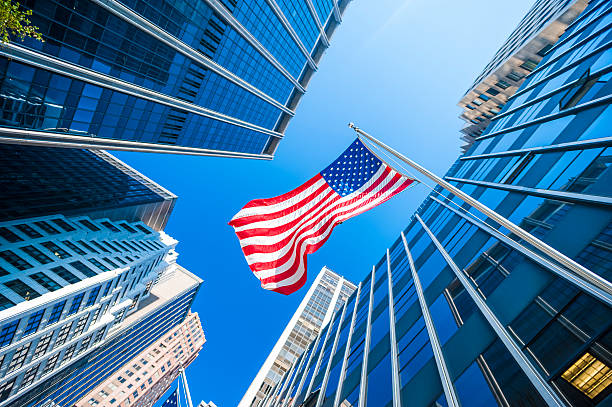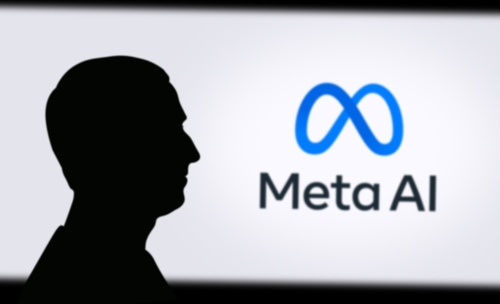Interface (TILE) Q2 EPS Jumps 50%

Key Points
Interface (NASDAQ:TILE) beat analyst expectations on both non-GAAP earnings and GAAP revenue, with non-GAAP EPS of $0.60 versus a $0.47 estimate and GAAP revenue of $375.5 million versus a $360.74 million estimate.
Gross margin (GAAP) surged to 39.4%, up from 35.4% in the prior year period, helped by higher pricing, product mix, and manufacturing efficiencies.
Americas segment revenue (GAAP) rose 11.4%, while EAAA segment operating income (GAAP) fell sharply, highlighting ongoing geographic divergence.
Interface (NASDAQ:TILE), a global manufacturer specializing in modular flooring for commercial and institutional spaces, released its earnings on August 1, 2025. The standout news was a clear outperformance versus Wall Street expectations, as Interface reported non-GAAP EPS of $0.60 (beating the analyst estimate of $0.47) and GAAP revenue of $375.5 million (beating the analyst estimate of $360.74 million). Non-GAAP earnings per share (EPS) came in at $0.60, well above the $0.47 consensus estimate (non-GAAP), while GAAP revenue reached $375.5 million, outpacing the $360.74 million GAAP projected revenue. This quarter's results reflected robust revenue growth, with GAAP net sales increasing 8% year-over-year, significant gross margin expansion, and a record profitability level versus estimates (non-GAAP). On the whole, the period saw strong execution in key North American markets, continued leadership in sustainability products, and some challenges abroad -- particularly in the Europe, Africa, Asia, and Australia (EAAA) region.
| Metric | Q2 2025 | Q2 2025 Estimate | Q2 2024 | Y/Y Change |
|---|---|---|---|---|
| EPS (Non-GAAP) | $0.60 | $0.47 | $0.40 | 50.0 % |
| Revenue | $375.5 million | $360.74 million | $346.6 million | 8.3 % |
| Gross Profit Margin | 39.4 % | 35.4 % | 4.0 pp | |
| Operating Income | $52.0 million | $38.2 million | 36.1 % | |
| Net Income | $32.6 million | $22.6 million | 44.3 % |
Source: Analyst estimates provided by FactSet. Management expectations based on management's guidance, as provided in Q1 2025 earnings report.
What Interface Does and Where the Focus Lies
Interface is known for its modular carpet tiles and a growing lineup of resilient flooring products, such as luxury vinyl tile (LVT) and rubber flooring. Its customers include corporate offices, healthcare facilities, educational institutions, and hospitality providers worldwide. The business model is built around design innovation, sustainability, and the ability to offer flooring solutions that are both durable and environmentally conscious.
Over the past several years, Interface has prioritized five critical areas: sustainability leadership, market diversification, innovative product design, robust supply chain management, and expanding its resilient flooring portfolio. Success depends on broadening end-market exposure beyond traditional corporate offices, delivering on eco-focused product promises, and maintaining efficiency in both manufacturing and sourcing. Moving into 2025, the company's investments in sustainability and product development remain key to its growth plans.
Quarter in Review: Critical Themes and Results
The latest quarter showcased a sharp top- and bottom-line beat compared to consensus, with non-GAAP EPS of $0.60 and GAAP revenue of $375.5 million both exceeding analyst estimates, signaling both sales momentum and improved profitability. The Americas (AMS) segment led the way, with 11.4% year-over-year GAAP revenue growth. Operating income for AMS rose to $48.8 million, up 82.2%. Operating income (GAAP) for AMS was $48.8 million, up 82.2%, highlighting the impact of Interface’s "One Interface" strategy -- aligning global teams and pushing cross-segment products. This segment was also buoyed by successful market share gains and an expanded product offering, especially as corporate offices continue to refresh and modernize facilities.
Revenue (GAAP) for the EAAA segment grew 3.4%, and GAAP operating income for the EAAA segment fell 71.8%. Currency-neutral sales actually slipped by 0.1% in the EAAA segment (non-GAAP). The gap between AMS and EAAA net sales growth points to a larger story of uneven economic recovery and regional variability. In EAAA, profitability slipped as higher costs outpaced limited sales gains, somewhat offsetting the triumphs seen in North America.
Profitability received a significant boost from gross margin expansion. The gross profit margin (GAAP) improved to 39.4%, up by 4.0 percentage points compared with last year. This gain was driven by a combination of higher pricing, better product mix, and greater manufacturing volumes, which helped distribute fixed costs over more units sold. The company noted that these benefits were only partially offset by increased raw material expenses. However, operating costs -- specifically selling, general, and administrative (SG&A) expenses (GAAP) -- increased faster than sales (GAAP), with adjusted SG&A up 10.8%. Management attributed this rise primarily to higher commissions and compensation linked to sales outperformance.
Order momentum continued, with consolidated currency-neutral orders up 2.9% year-over-year (non-GAAP), further supported by a 12% year-over-year increase in backlog at the end of Q1. Billings in key target markets also advanced, with healthcare up 28%, education up 11%, and corporate office up 3% year-over-year. These segments are central to Interface's market diversification strategy, aiming to reduce reliance on corporate office cycles.
On the balance sheet, cash holdings (GAAP) rose to $121.7 million, up 22.6% since December 2024, while net debt (non-GAAP) fell to $182.7 million, reducing the net leverage ratio to 0.9 times (net debt divided by last 12-months adjusted EBITDA, non-GAAP). No changes to the company’s capital allocation priorities were indicated, with management reiterating its focus on internal investment and margin-supporting initiatives.
Spotlight on Product, Strategy, and Risks
Sustainability remains at the heart of Interface’s products and brand. The company is pushing toward becoming carbon-negative by 2040, using materials like bio-based polymers and CQuest™ carpet tile backings. While management describes ongoing progress and points to customer demand for "green" flooring products, it did not provide quantifiable key performance indicators for sustainability in this release.
Market diversification emerged as another bright spot. Rapid billing growth in healthcare and education demonstrates Interface’s expanding presence beyond office spaces, as global billings increased 28% in Healthcare and 11% in Education. These gains help buffer the cyclicality tied to corporate office demand. The slower rebound in the EAAA region, however, reveals the ongoing risk of relying too heavily on U.S. and North American markets for growth.
The company continues to invest in product innovation, launching new styles in its i2 modular carpet product line, LVT resilient flooring, and nora rubber tile collections. These products serve a wide range of customer needs, with recent leadership changes intended to further accelerate global product development. Tariff exposure -- especially U.S. tariffs applied to nora rubber (imported from Germany) and LVT from South Korea -- represents about 15% of total product costs, or roughly $10–15 million per year, based on management commentary during Q1. Management says it plans to offset these costs through higher pricing and productivity measures already reflected in the full-year forecast.
Lastly, Interface continues to invest in its resilient flooring business, including LVT and nora rubber tiles. While management reinforced the importance of these products as growth drivers, the quarterly release did not include specific sales data for these lines.
Looking Forward: Guidance and Watchpoints
Management raised its full-year guidance on both sales and adjusted gross profit margin, now targeting net sales between $1.37 billion and $1.39 billion, and an adjusted gross profit margin of 37.7% for Q1. For Q3, Interface expects GAAP net sales between $350 million and $360 million, an adjusted gross margin of 38.0% for Q3, and adjusted SG&A of $92 million for Q3. These updates reflect increased confidence based on year-to-date performance and backlog strength, but management continues to flag global economic volatility and EAAA region softness as key risks. No new announcements were made on capital allocation or dividend payments.
Revenue and net income presented using U.S. generally accepted accounting principles (GAAP) unless otherwise noted.
Where to invest $1,000 right now
When our analyst team has a stock tip, it can pay to listen. After all, Stock Advisor’s total average return is 1,036%* — a market-crushing outperformance compared to 181% for the S&P 500.
They just revealed what they believe are the 10 best stocks for investors to buy right now, available when you join Stock Advisor.
*Stock Advisor returns as of July 29, 2025
JesterAI is a Foolish AI, based on a variety of Large Language Models (LLMs) and proprietary Motley Fool systems. All articles published by JesterAI are reviewed by our editorial team, and The Motley Fool takes ultimate responsibility for the content of this article. JesterAI cannot own stocks and so it has no positions in any stocks mentioned. The Motley Fool has no position in any of the stocks mentioned. The Motley Fool has a disclosure policy.




.jpg)
